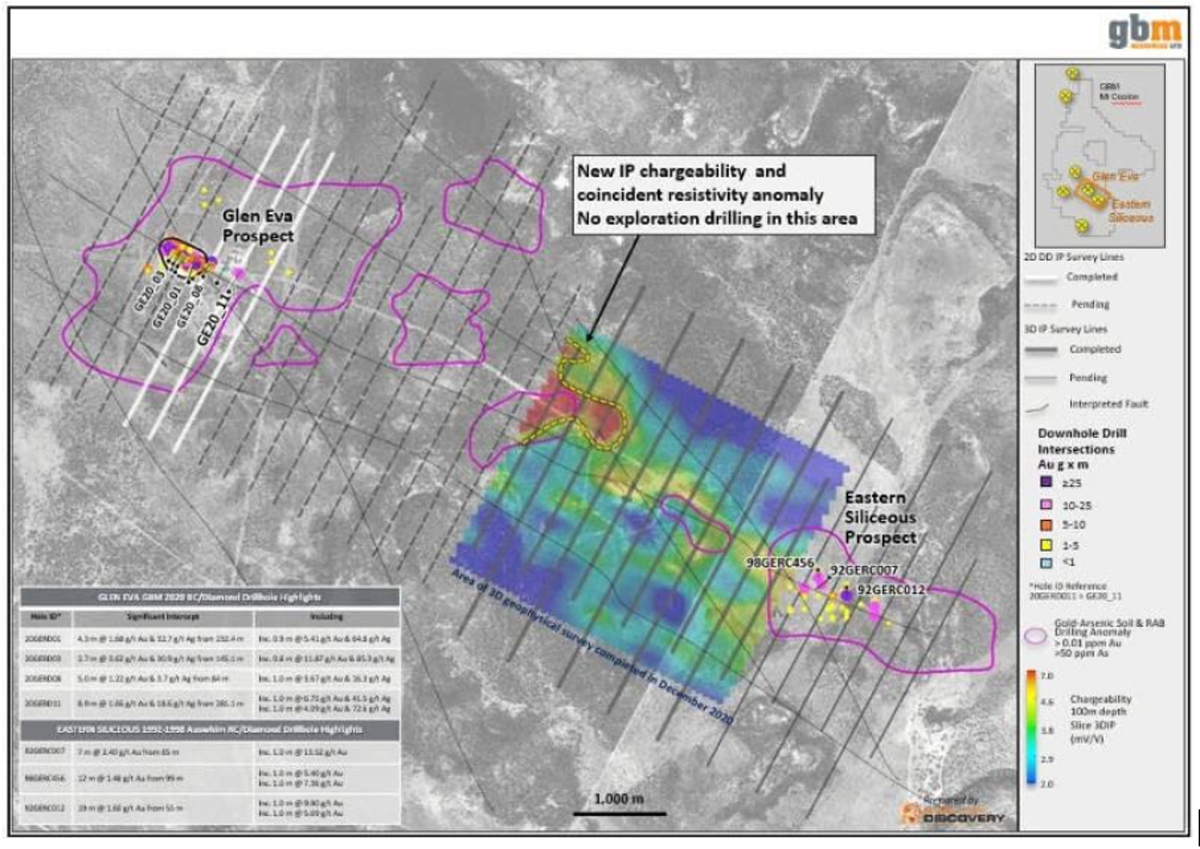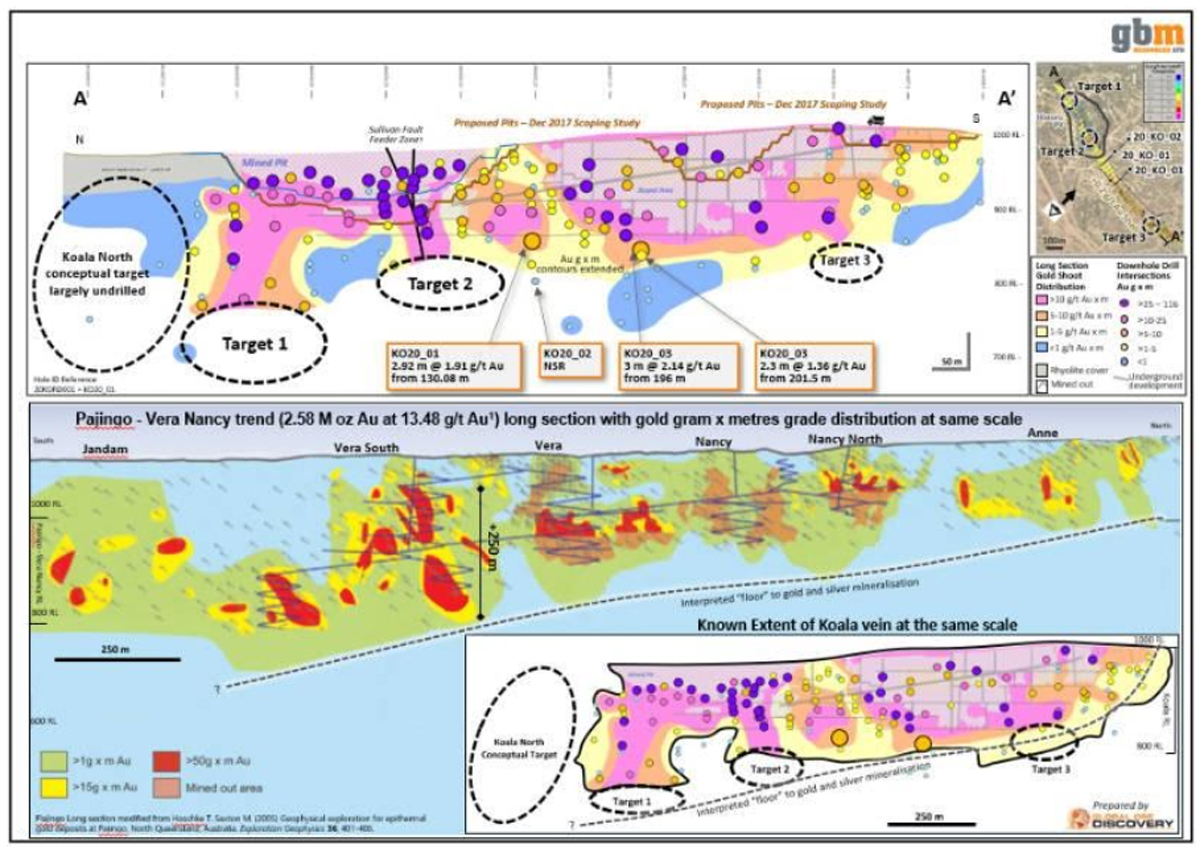GBM chasing big gold targets in Queensland

Pic: Bloomberg Creative / Bloomberg Creative Photos via Getty Images
Special Report: Drilling and geophysics carried out in 2020 have set the stage for GBM to pursue bigger targets at its Drummond Basin projects in Queensland.
Some key takeaways include identifying the similarity of the Koala prospect to the world-class Pajingo gold deposit, doubling the strike extent of the Glen Eva prospect to 550m and identifying target outlined by a large, open ended, low order chargeability and resistivity anomaly at the Glen Eva/ Eastern Silicious (GEES) epithermal trend over 6km.
GBM Resources (ASX:GBZ) managing director Peter Rohner said the preliminary drilling and geophysics programs were combined with data mining of historical exploration information to highlight a series of compelling exploration targets.
“Coupled with the successful acquisition of the Yandan project, GBM has grown its Drummond Basin resource base to 852,000oz of gold and adding new advanced exploration prospects at IIlamahta and North East Ridge to the mix,” he added.
“This will make 2021 an aggressive year for exploration at our Flagship Drummond Basin projects.”
The company is well funded for exploration with $8.5m in cash at hand as of 31 December 2020 and liquid assets of Novo Resources shares valued at ~ $4 m at 29th Jan 2021.
GEES trend
GEES is a +6km long gold trend defined by a series of structures evident in detailed aeromagnetic data and an alignment of gold prospects such as the Glen Eva deposit at the northwestern end and the Eastern Silicious prospect at the southeast end.
Exploration to date has identified a large, open-ended chargeability and coincident low order resistivity anomaly at a permissive structural intersection in the centre of the GEES trend (also coincident with Au/As soil anomaly) .
This is one of the key targets for exploration in 2021.

Glen Eva
Meanwhile, late 2020 drilling at Glen Eva intersected multiple zones of anomalous gold-silver-telluride mineralisation with low base metals.
Notable results are 8.9m grading 1.66 grams per tonne (g/t) gold and 18.6g/t silver from a depth of 281.1m and 2.7m at 3.62g/t gold and 30.9g/t silver from 145.1m
Just as importantly, the first intersection also served to double the known strike extent of the Glen Eva vein zone to a total of 550m while confirming that the structure is strongly dilated, hosting large veins with pulses of higher grade gold and silver mineralisation to the southeast.
These provide a strong vector for GBM to carry out further drilling to the southeast along the Glen Eva vein zone targeting shoots of high-grade gold – silver mineralisation.
Eastern Silicious
Interpretations of the Eastern Silicious prospect outlined a series of sub-horizontal strata-bound mineralised bodies with the top of the mineralisation generally within 50-60m of the surface.
This is similar to mineralisation seen at the company’s Eugenia project and the historical Yandan open pit, which indicates that the top of the epithermal gold zone has been preserved at the Eastern Silicious prospect.
Little or no systematic exploration has been carried out at the prospect since 2005 and GBM considers it to be a priority prospect for further exploration and will begin systematic mapping and sampling of the large alteration system in the current quarter.
Koala prospect
Over at the Koala prospect, drilling carried out in 2020 on three targets returned results such as 2.9m at 1.9g/t gold and 20.3g/t silver as well as 2.3m at 1.36g/t gold and 0.9g/t silver.
A further two priority targets remain to be tested.
The assays are interpreted to confirm an overall northerly plunge to the “floor” of the gold mineralisation at Koala.
This suggests that gold mineralisation may continue to greater depths toward the north.

GBM notes that the world-class Pajingo gold deposit in the northern Drummond basin shows a similar plunge to the floor of gold mineralisation.
The company says this supports the drill testing of priority targets outlined at the northern end of the Koala vein trend in future drill campaigns. Drilling of these holes was hampered by wet weather late in 2020.
Recent surface reconnaissance along the northern strike extension of the Koala system has shown that the area to the immediate north of the Koala pit contains outcrops of andesite host rock and that overlying rhyolitic volcanic rocks at the northern end of the pit are crosscut by the Koala fault zone.
Previous exploration and drilling along the northern strike extension of the Koala vein is limited, leaving open the potential for discovery concealed shoots of epithermal gold – silver mineralisation in this area.
GBM is consolidating historical exploration data from the area into its database and will begin systematic mapping and surface mapping in the current quarter.
This article was developed in collaboration with GBM Resources, a Stockhead advertiser at the time of publishing.
This article does not constitute financial product advice. You should consider obtaining independent advice before making any financial decisions.
UNLOCK INSIGHTS
Discover the untold stories of emerging ASX stocks.
Daily news and expert analysis, it's free to subscribe.
By proceeding, you confirm you understand that we handle personal information in accordance with our Privacy Policy.








